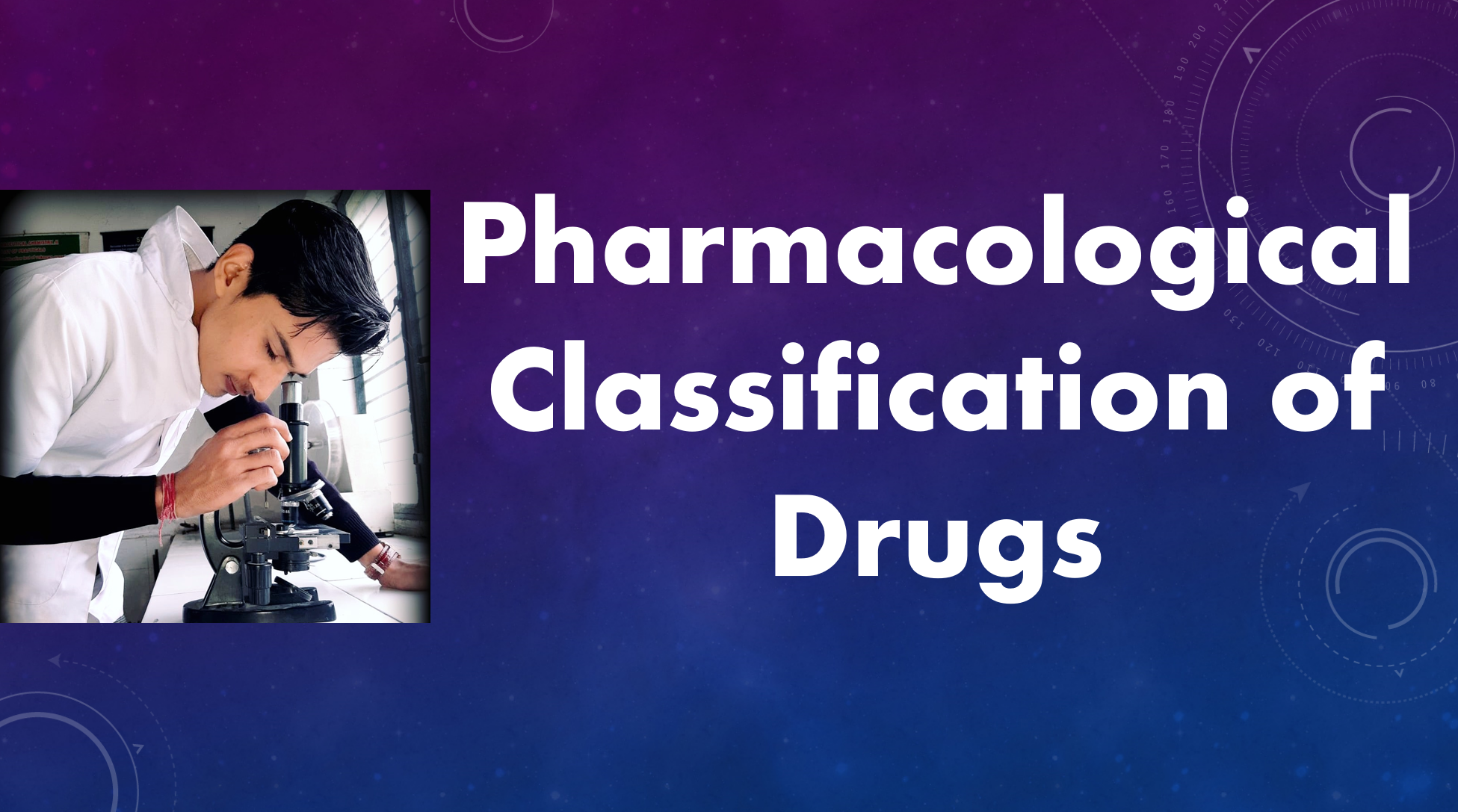Pharmacological classification of drugs is a systematic approach to categorizing medications based on their specific mechanisms of action, therapeutic effects, and the physiological or biochemical systems they target within the body. This classification system is vital in medicine and healthcare as it helps healthcare professionals understand how drugs work and how they can be applied effectively. Here’s a note on the pharmacological classification of drugs:
1. Mechanism of Action
At the core of pharmacological classification is the mechanism of action of a drug. This refers to how a drug interacts with specific receptors, enzymes, or physiological processes in the body to produce its therapeutic effects.
2. Therapeutic Effects
Drugs are classified based on the intended therapeutic effects they produce. This can include drug classes such as analgesics (pain relievers), antihypertensives (blood pressure-lowering drugs), and anticoagulants (blood-thinning drugs).
3. Receptor-Based Classification
Many drugs work by binding to specific receptors in the body. For example, drugs that target opioid receptors are classified as opioids, while drugs that interact with beta-adrenergic receptors are classified as beta-blockers.
4. Enzyme Inhibitors
Some drugs act as enzyme inhibitors, blocking the activity of specific enzymes in the body. For instance, angiotensin-converting enzyme (ACE) inhibitors are used to treat hypertension by inhibiting the ACE enzyme.
5. Ion Channel Modulators
Certain drugs affect ion channels in cell membranes. For example, calcium channel blockers regulate the flow of calcium ions into cells and are used to treat conditions like hypertension and angina.
6. Autonomic Nervous System Modulation
Drugs can also be classified based on their impact on the autonomic nervous system. This includes drugs that are sympathetic (stimulating) or parasympathetic (inhibiting) in their actions.
7. Antagonists and Agonists
Pharmacological classification distinguishes between agonists (drugs that activate receptors) and antagonists (drugs that block or inhibit receptors). For example, beta-agonists stimulate beta-adrenergic receptors, while beta-blockers act as antagonists.
8. Disease-Specific Categories
Drugs that target specific diseases or conditions are often classified into therapeutic categories, such as antivirals, antibiotics, antifungals, and anticancer agents.
9. Multimodal Drugs
Some drugs may have multiple mechanisms of action and can belong to more than one pharmacological class. This is common in medications used to manage complex medical conditions.
10. Importance in Clinical Practice
Pharmacological classification is essential for healthcare professionals to understand how drugs work, make informed prescribing decisions, and manage drug interactions and side effects.
11. Evolving Field
Continuous evolution characterizes the field of pharmacology as it develops new drugs and refines our understanding of the mechanisms of action for existing drugs.

